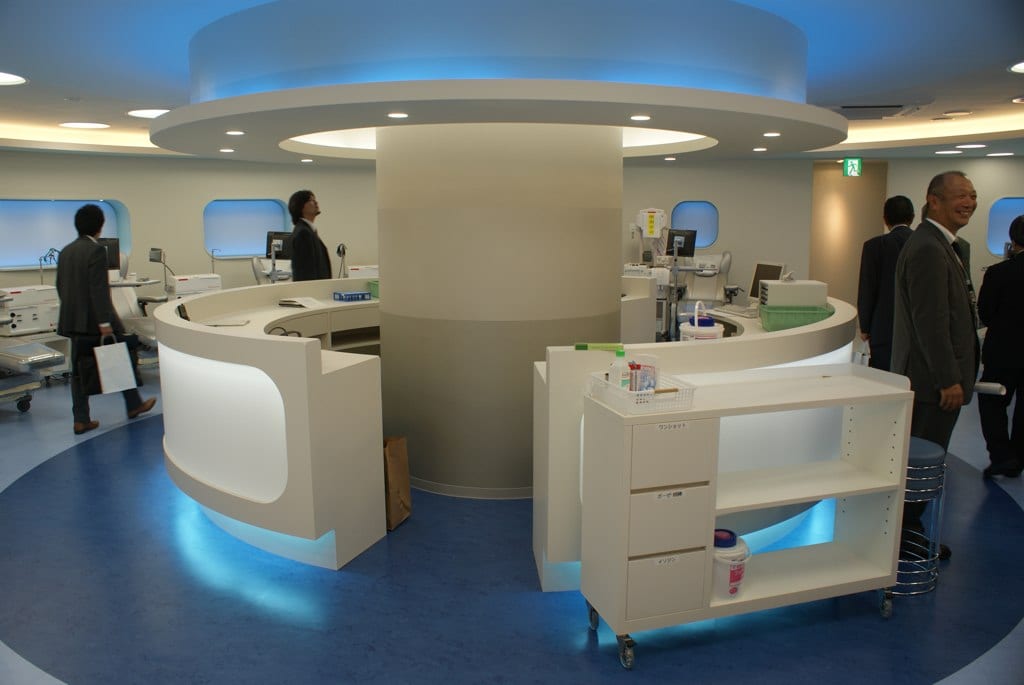
Great CX is vital for successful healthcare
An increased focus on customer experience – not just the customer service element – is becoming increasingly vital to ensure success as a healthcare provider. Speaking as a surgeon, healthcare professional and customer experience expert, I believe the vibrant Middle East healthcare market will belong to those who recognise and respond to its potential.
Clarifying the definitions
I feel clarification on the definitions might help as many are still using customer service and customer experience interchangeably.
The nearest thing to an official definition states “Customer experience is the sum of all the interactions a customer has with a business and its products or services”. It is the customer’s perception of a company. According to Forrester, Customer Experience (CX) is defined as “how customers perceive their interactions with your company.” Both definitions have value, but I believe this can go further. I think there it helps to differentiate customer outcome which is synonymous with delivering a need and the experience associated with that outcome which recognises the want aspect. There is more to this which will be expanded on in another article.
Customer service, on the other hand, is the quality of advice and assistance given by the company staff who directly face customers before, during and after buying or using its products or services. Customer service strives to increase customer satisfaction and loyalty by improving the quality of the existing customer interactions.
For example, a customer interaction with your contact centre (call centre, receptionist, etc.) is a customer service; whereas the reason why they’re calling your contact centre, everything that occurred prior to the call, and how they feel about the service they received is the customer experience. Another example from food industry: how friendly the wait staff are, and how quickly they bring the food is customer service; however, restaurant cleanliness, the taste/quality of the food, the variety of menu options, the atmosphere, the prices, and how they feel while they are eating there is all part of the customer experience.
This appears to be a simplistic distinction, but I observe that the two terms are being used interchangeably in healthcare and this results in misaligned focus or missed opportunity particularly in the way internal company and customer journeys are aligned. There are numerous service streams in healthcare and these often feel siloed and disconnected from the customer perspective and cumbersome, slow and costly within the organisation.
Examining Customer Processes
As customers interact with an organisation, they go through various stages as part of their customer journey:
- Awareness/Interest (perhaps through a deliberate or random contact)
- Discovery (becoming intentional about seeking more information/insight about the want/need and options to solve)
- Attraction (need or want based. This is an important distinction)
- Interaction/action
- Purchase
- Use
- Cultivation
- Advocacy
Sometimes a company focuses on specific parts of the customer journey but fails to impress the customer in the other parts. This can happen when a company service stream responsible for one part of the interaction passes the next step of the customer interaction to another party who handles it differently and creates a customer experience that is lacking due to one reason or another. Think about your own personal lives – how often you have been sufficiently attracted enough to a product or service to buy it – only to find subsequent customer support levels to be below par. The impact on reputation can create “customer rebellion” – social media complaints, poor feedback scores. New potential customers spot this and it impacts their desire to buy.
In some industries this concept is well understood but highly siloed organisations still find the lack of integration between customer journey and company process a significant problem. If you skate over the problem, it will directly hurt your bottom line.
This is particularly the case in healthcare, where customers are always being looked at as the “one who receives the service” – this is mostly “the patient”. In fact; the “customer” is much more multi-faceted. This could be the patient, the patients, family, concerned friends, external healthcare providers, companies who employ and make financial contribution – the list is very wide. So many of these are impacted and can contribute to “the weight of opinion” that influences how they buy and interact. The current practice focuses only on the client and forgets about the rest, meaning that the ultimate objective of “Advocacy” will be harder to achieve and revenue, cost and service opportunity is lost.
Therefore, for any future healthcare organisation to be outstanding, it must identify first who are the costumers, what gives them value, what makes them happy, how to know they are receiving value and being happy and how to “get them there” i.e. be proactive rather than reactive. In other words, aim for a better and wider understanding of customer experience and appreciate a better customer service – whilst important is a subset of the overall customer experience.
The scale of opportunity
Healthcare is now regarded as one of the fastest growing sectors in many countries. For example, in the Middle East, healthcare spend in the GCC was estimated to grow almost 300% in the last seven years and reach $133.19bn in 2018, due to a rising population, an increase in lifestyle diseases and deeper insurance penetration.
There are numerous high-profile healthcare projects being built across the region, both by governments and by private foreign healthcare investors, with big names like Cleveland Clinic and King’s College London, joining companies already established in the market, including Johns Hopkins, Imperial College London, Cornell University and Moorfield’s. This means that “customers” will have different options to choose between and that makes the concept of improving customer experience critical for those businesses to become better recognised, evolve and flourish.
In fact, it is not always “the obvious” when it comes to how to make the “customer” happy. It is obvious that patients will really care about the healthcare outcome (i.e. cure) as their first priority from their doctor or hospital. Focus will move very quickly from having a seamless positive experience i.e. streamlined process through their different touch points and interactions. In a healthcare setting it is of paramount importance to avoid any unpleasant “moments of truth” during any of these interactions. Don’t think for a moment that these don’t happen. For example, long waiting times are felt to be a frustrating side effect in healthcare. Imagine how much worry and concern could be heightened when the patient and/or their family are kept waiting in difficult times. How do you think the patient feels about a healthcare provider when they have to fill in or repeat information repeatedly and information still gets lost? What happens if a patient is worried about their situation and asking lots of questions in a consultation that is only scheduled to last 10 minutes to maximise efficiency? Siloed and disconnected processes are everywhere!
What about the employee?
Employees, can be recognised as a type of “customer”. They expect to get engaged in the organisation improvement projects, they expect to be trained, they require recognition for any achievement they do, and obviously would like to have a clear career path for growth and development.
This applies also for the payers e.g. insurance companies. This kind of “customer” will be happy if they are sure of the best healthcare practice and outcomes based on evidence-based medicine protocols and strategies, they expect to know the quality and audit results of the healthcare organisation and make sure that there is no over-utilisation of the services either by the patients or the healthcare provider.
It’s clear that you need to keep all your “customers’ experiences” in a good place. This will become a real challenge with the expected growth in the healthcare market especially in rapid growth economies such as the middle east. Those who don’t make improving their customer experience central to their business strategies will have difficulty maintaining market share, retaining customers and growing revenues. The companies who place customer centric success strategies at the centre of everything they do will quickly rise to the top of their markets. Service excellence is only excellent if customer outcomes are deeply understood and embedded into every process – customer (in all it definitions) – or not.
It’s also not an easy or overnight path to success. Companies have to be obsessive and intentional at all levels to make it work. The one thing I have observed is – for those who are prepared to invest the effort, it is worth it many times over!
About Author:
Haytham Soliman is a GMC registered orthopaedics surgeon with more than 10 years of clinical experience, trained in Orthopaedics Surgery with special interest in Sports Medicine. He is an advocate of applying quality control measures, evidence-based medicine and updated clinical research in his practice. He also has 8 years’ business and managerial experience with Bupa Arabia as a Customer Experience Excellence Leader. His expertise includes project management, cost containment strategies, strategic partners’ relations and customer experience excellence protocols. An ex-professional athlete, he has a passion for sports and is currently participating in amateur level triathlon competitions.





